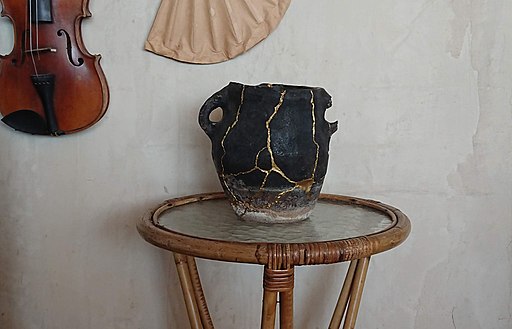
Six years ago I floated an idea for scientific journals that I nicknamed the Pottery Barn Rule. The name is a reference to an apocryphal retail store policy captured in the phrase, “you break it, you bought it.” The idea is that if you pick something up in the store, you are responsible for what happens to it in your hands.* The gist of the idea in that blog post was as follows: “Once a journal has published a study, it becomes responsible for publishing direct replications of that study. Publication is subject to editorial review of technical merit but is not dependent on outcome.”
The Pottery Barn framing was somewhat lighthearted, but a more serious inspiration for it (though I don’t think I emphasized this much at the time) was newspaper correction policies. When news media take a strong stance on vetting reports of errors and correcting the ones they find, they are more credible in the long run. The good ones understand that taking a short-term hit when they mess up is part of that larger process.**
The core principle driving the Pottery Barn Rule is accountability. When a peer-reviewed journal publishes an empirical claim, its experts have judged the claim to be sound enough to tell the world about. A journal that adopts the Pottery Barn Rule is signaling that it stands behind that judgment. If a finding was important enough to publish the first time, then it is important enough to put under further scrutiny, and the journal takes responsibility to tell the world about those efforts too.
In the years since the blog post, a few journals have picked up the theme in their policies or practices. For example, the Journal of Research in Personality encourages replications and offers an abbreviated review process for studies it had published within the last 5 years. Psychological Science offers a preregistered direct replications submission track for replications of work they’ve published. And Scott Lilienfeld has announced that Clinical Psychological Science will follow the Pottery Barn Rule. In all three instances, these journals have led the field in signaling that they take responsibility for publishing replications.
And now, thanks to hard work by Chris Chambers,*** I was excited to read this morning that the journal Royal Society Open Science has announced a new replication policy that is the fullest implementation yet. Other journals should view the RSOS policy as a model for adoption. In the new policy, RSOS is committing to publishing any technically sound replication of any study it has published, regardless of the result, and providing a clear workflow for how it will handle such studies.
What makes the RSOS policy stand out? Accountability means tying your hands – you do not get to dodge it when it will sting or make you look bad. Under the RSOS policy, editors will still judge the technical faithfulness of replication studies. But they cannot avoid publishing replications on the basis of perceived importance or other subjective factors. Rather, whatever determination the journal originally made about those subjective questions at the time of the initial publication is applied to the replication. Making this a firm commitment, and having it spelled out in a transparent written policy, means that the scientific community knows where the journal stands and can easily see if the journal is sticking to its commitment. Making it a written policy (not just a practice) also means it is more likely to survive past the tenure of the current editors.
Such a policy should be a win both for the journal and for science. For RSOS – and for authors that publish there – articles will now have the additional credibility that comes from a journal saying it will stand by the decision. For science, this will contribute to a more complete and less biased scientific record.
Other journals should now follow suit. Just as readers would trust a news source more if they are transparent about corrections — and less if they leave it to other media to fix their mistakes — readers should have more trust in journals that view replications of things they’ve published as their responsibility, rather than leaving them to other (often implicitly “lesser”) journals. Adopting the RSOS policy, or one like it, will be way for journals to raise the credibility of the work that they publish while they make scientific publishing more rigorous and transparent.
* In reality, the actual Pottery Barn store will quietly write off the breakage as a loss and let you pretend it never happened. This is probably not a good model to emulate for science.
** One difference is that because newspapers report concrete facts, they work from a presumption that they got those things right, and they only publish corrections for errors. Whereas in science, uncertainty looms much larger in our epistemology. We draw conclusions from the accumulation of statistical evidence, so the results of all verification attempts have value regardless of outcome. But the common theme across both domains is being accountable for the things you have reported.
*** You may remember Chris from such films as registered reports and stop telling the world you can cure cancer because of seven mice.